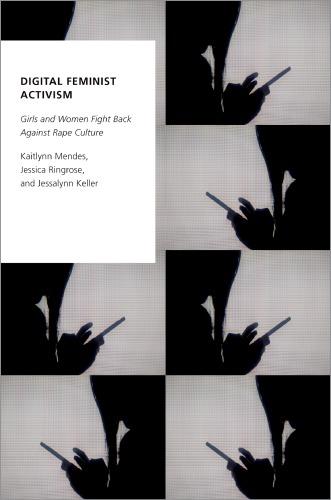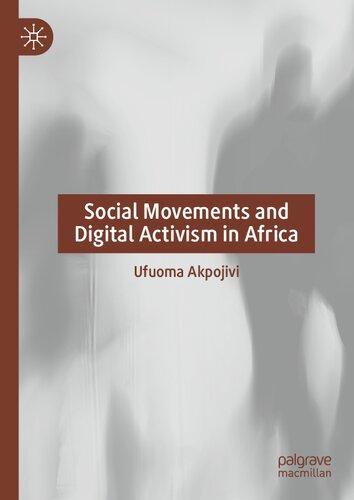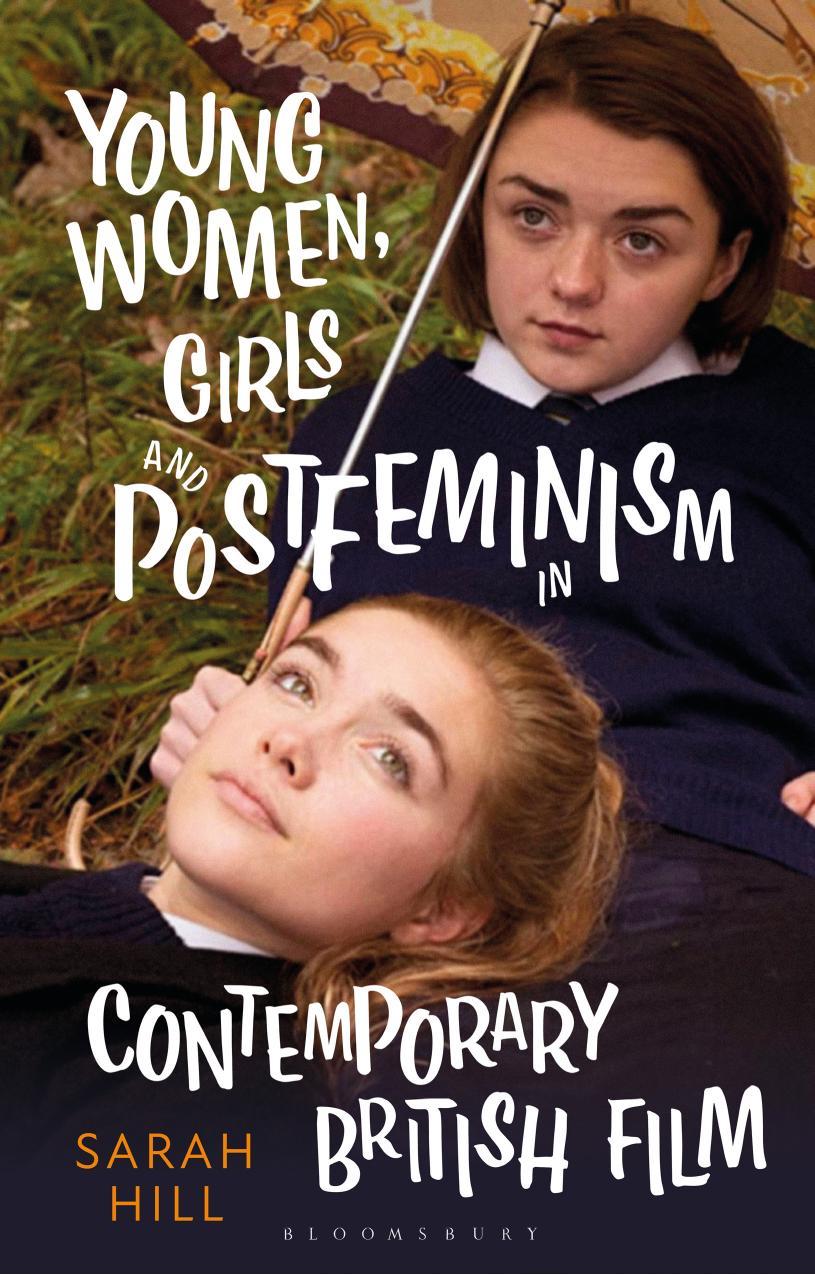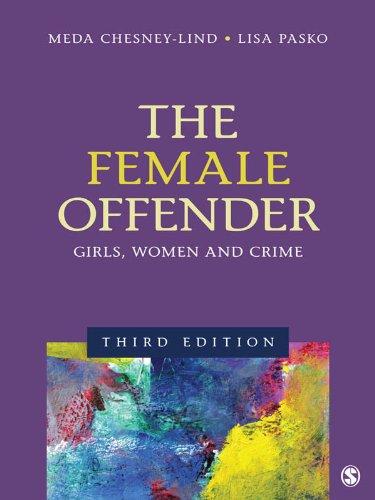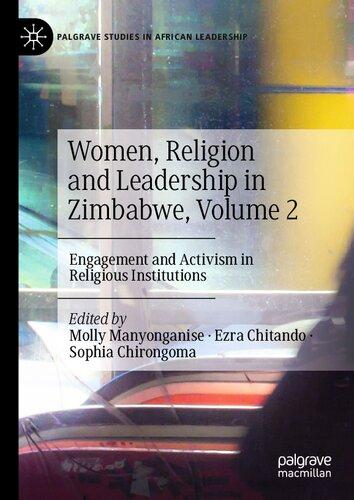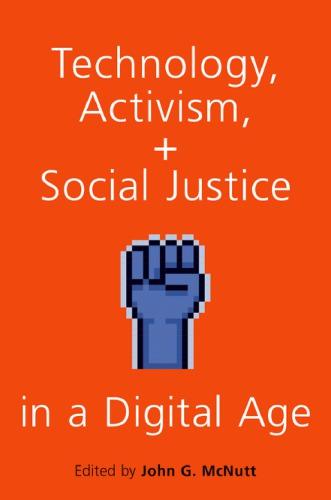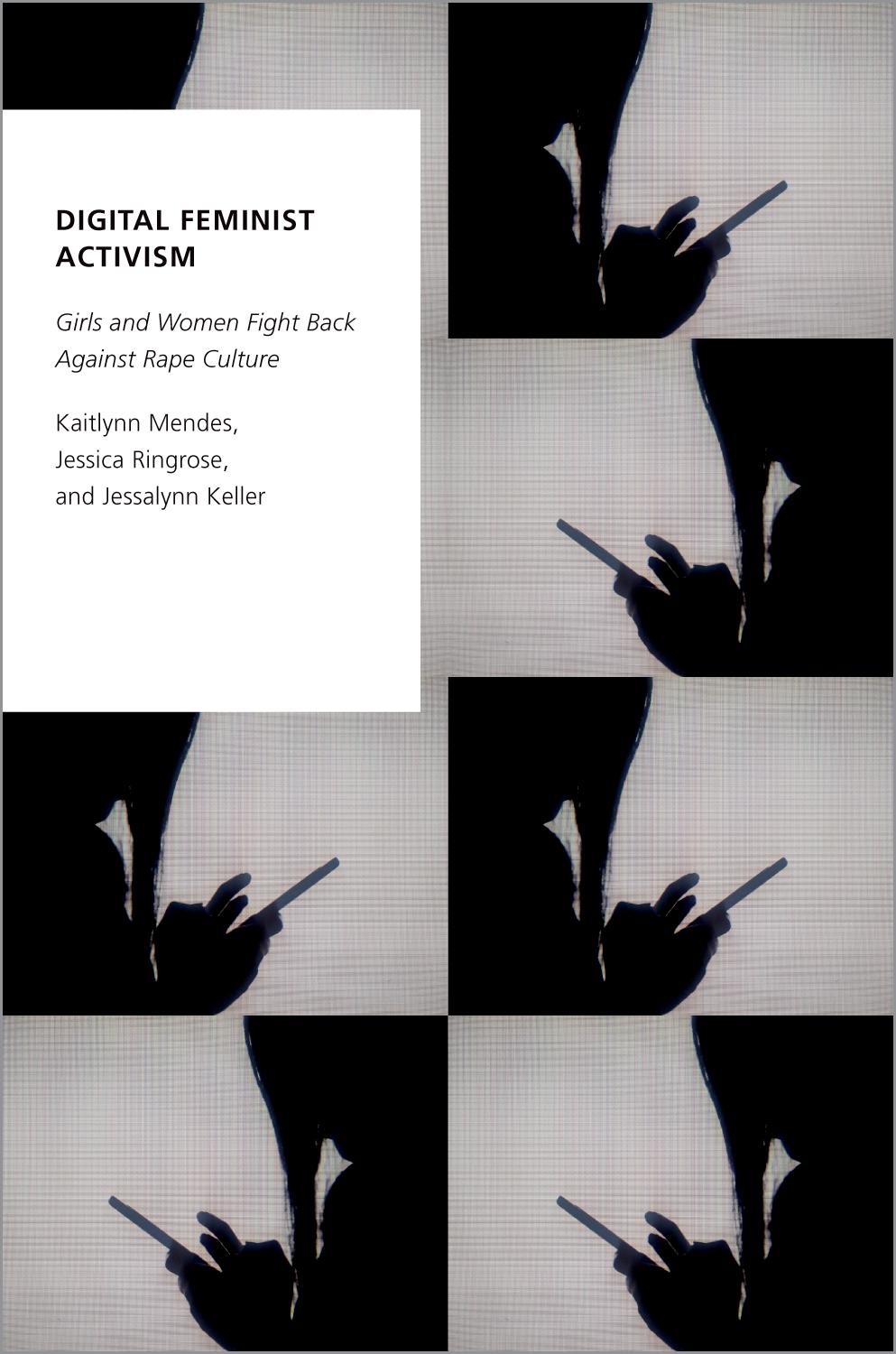1
Introduction
Digital Feminist Interventions
For over a decade, feminist scholars and critics have sought to challenge the idea we are living in a “postfeminist” moment where feminism is irrelevant, dated, and even dead (Gill 2007; McRobbie 2009; Mendes 2011b; Scharff 2012; Ringrose 2013). This postfeminist sensibility, yoked to the neoliberal values of individualism, self-regulation, and entrepreneurialism (Gill and Scharff 2011; Gill 2016), has not only fostered an environment in which collective social action is discouraged in favor of individual change, but one in which rape culture and misogyny remain prevalent in common cultural narratives. Despite this, postfeminism requires girls and women to withhold their critique of patriarchal ideas (McRobbie 2009), and those that refuse are often ridiculed or chastised for having no sense of humor, or are seen as fighting for more than their share of rights (Gill and Scharff 2011; Mendes 2011b). Yet in spite of this, it is clear that new formations of feminism and diverse feminist communities do exist and are being reimagined and expanded through the use of new media. This visibility of contemporary feminist politics is heightened both by the opportunities afforded by digital media technologies and our current cultural moment, whereby feminism is increasingly popular (Banet-Weiser 2015; Banet-Weiser and PortwoodStacer 2017; Gill 2016; Keller and Ryan 2018).
In today’s “feminist zeitgeist” (Valenti 2014; Gill 2016), feminist ideologies, initiatives, critiques, and even celebrities have attained significant levels of visibility within popular media cultures (Darmon 2017; Hamad and Taylor 2015; Gill 2016; Rivers 2017). From pop singer Beyoncé dancing in front of an illuminated screen reading “FEMINIST” at the 2014 Video Music Awards (Valenti 2014; Keller and Ryan 2018), to “feminist” special issues of popular magazines such as ELLE (Keller and Ringrose 2015), to Dior’s “WE SHOULD ALL BE FEMINISTS” T-shirts launched in their 2017 Spring/Summer campaign, feminism is increasingly visible and consumable in mainstream culture
(Banet-Weiser 2012). In recent years, feminist activism has also attracted public attention. For example, viral hashtags such as #MeToo, #BringBackOurGirls, #YesAllWomen, and #BeenRapedNeverReported have highlighted the ongoing problem of violence against girls and women, while over 200 global SlutWalk marches demanded an end to victim-blaming and rape culture in 2011 (Mendes 2015). Most recently, we’ve seen Women’s Marches challenge the sexism, racism, and xenophobia of the Trump administration (Przybyla and Schouten 2017), and commercial magazines such as Teen Vogue advocate for reproductive justice and LGBTQ+ (lesbian, gay, bisexual, transgender, and queer) rights (Keller 2017).
The increased visibility of these activist initiatives is largely due to the ways that digital technologies are being used in creative and innovative ways to further feminist aims since the turn of the century. For example, in 2005, a group of seven New Yorkers created the website Hollaback! to combat street harassment. Now active in 31 countries, Hollaback! has been crucial in shaming perpetrators, raising awareness, and encouraging people of all genders, sexualities, and orientations to challenge street sexual harassment in diverse local communities. A decade later, a Canadian teenager reprimanded for wearing a crop top to school, used the hashtag #CropTopDay to organize a protest day in which over 300 girls wore belly-baring tops to school (Keller 2018). This protest combined digital technology and school-based action to challenge the ways girls’ bodies are policed and subject to gendered body shaming and “slut-shaming” in school settings (Ringrose and Renold 2012). The teens used Twitter as both an organizing tool and as a platform to circulate alternative narratives about school dress codes, producing a space where teenage girls were seen as feminist activists—political identities they are often denied (Harris 2004; Kearney 2006; Keller 2015). Finally, just as were finishing this book in late 2017, the hashtag #MeToo began trending on Twitter. This hashtag, like many others before it (#YesAllWomen, #NotOk), provided women with an opportunity to share personal experiences of sexual assault and abuse, and in doing so, showcased the pervasiveness of such practices, while sparking dialogue and debates about how to challenge them.
These are three examples of the innovative ways girls and women are using participatory digital media as activist tools to dialogue, network, and organize to challenge contemporary sexism, misogyny, and rape culture. In doing so, these activists expose, critique, and educate the public about sexism and offer counter discourses to the “popular misogyny” that Sarah Banet-Weiser (2015) argues is increasingly prevalent in twenty-first century media culture. Yet, despite these often highly visible forms of activism and the growing body of research interested in digital feminist activism (Baer 2016; Clark 2016; Fotopoulou 2016a; Keller 2012, 2015; Rentschler 2014; Shaw 2012b), little research has yet to
explore girls’ and women’s experiences of using digital platforms to challenge misogynistic practices and dialogue.
This is therefore the first book-length study to interrogate how girls and women negotiate rape culture through digital platforms, including blogs, Twitter, Facebook, Tumblr, and mobile apps. Based upon a 21-month study funded by the Arts and Humanities Research Council UK, we address four primary research questions: What experiences of harassment, misogyny, and rape culture are girls and women responding to? How are girls and women using digital media technologies to document experiences of sexual violence, harassment, and sexism? Why are girls and women choosing to mobilize digital media technologies in such a way? And finally, what are their experiences in using digital technologies to engage in activism? We address these questions through an analysis of the following six case studies:
• Hollaback!—a website where users share stories of street harassment and “map” locations of harassment using GPS-based technology.
• Everyday Sexism—a website where the public post personal accounts of sexism.
• Who Needs Feminism?—a Tumblr site where users upload photos of handcrafted signs explaining why feminism is necessary.
• The Twitter anti-rape culture hashtag #BeenRapedNeverReported.
• A diverse range of international self-defined “Twitter Feminists” (women and some men) who regularly use social media platforms to challenge rape culture.
• A London school-based feminist group who collectively challenge rape culture and misogyny online and inside the institutional space of schools.
In order to capture the experience of doing digital feminist activism, this project combines multiple methodological approaches, including qualitative content analysis, thematic analysis, and ethnographic methods such as indepth interviews, focus group interviews, surveys, and observations of online communities. Across the six case studies just listed, we conducted semi-structured interviews with 78 girls and women and 4 men from diverse international contexts, and analyzed over 800 pieces of digital content, including blog posts, tweets, and selfies. Our study was primarily aimed at collecting the voices and experiences of subjects who were building relationships to and with feminism, and the majority of our participants self-identified as girls and women, although as noted previously, we also worked with four self-identified feminist men. It is critical to note however that throughout our research we take a de-essentializing approach to gender identity and recognize the fluid and mobile nature of gender classifications particularly in the digital environments we are studying. We do
not treat girl or women therefore as naturalized or essential categories (Butler 1991). The cyborgian nature of digitized environments continuously unsettles our ability to view, classify, and measure identity categories as naturally tied to sexed, raced, or otherwise identifiable bodies (Haraway 1991). Nonetheless we do take a position that sexual violence is heavily gendered (Phipps et al. 2018), with those occupying feminized bodies bearing the brunt of sexism as well as homophobic, transphobic, and other forms of hate. Nonconforming “male” bodies are often shamed (Pascoe 2005), for example when performing feminism, as we will explore in chapter 5.
To work across these complexities, our methodology draws on traditions of social media ethnography (Postill and Pink 2012), while simultaneously considering questions of personal experience, power, and difference that anchor feminist research methodologies (Hesse-Biber 2012; Shaw 2013; Taft 2011; van Zoonen 1994). Our aim throughout this book is to provide insights into some of the unique challenges we faced throughout the research process, including those at practical, emotional, and psychological levels. These challenges include complexities around conducting intersectional analyses in anonymized spaces, where markers of identities (such as racial or gender identities) and embodiment is often hidden or deliberately erased. Moreover, conducting research from a bottom-up approach, and the ways we as a research team were trolled, presented both opportunities and difficulties. We hope then that this book contributes to a deeper understanding of how feminists can study digital media cultures that are often fluid, dispersed, and challenging to define and access as researchers.
Although we are not alone in studying the diverse and vibrant means through which feminists have embraced digital technologies to challenge rape culture, what makes our study and findings unique is not only our attention to how these digital tools are being used, but our mapping of the experiences of those involved. While we contend it is important to ask questions about the content, context, and uptake of digital feminist activism, this book presents a unique intervention by attending to how these initiatives are felt and experienced by those who participate and organize them. The book draws heavily on theories of affect, including concepts such as affective solidarity (Hemmings 2012), affective publics (Papacharissi 2015), and networked affect (Hillis, Paasonen, and Petit 2015), applying them to empirical evidence that extends beyond macro- and micro- level data analysis to explore the lived experiences of digital feminist activists as they challenge rape culture. We also revisit key concepts used by digital media studies scholars, such as communicative capitalism (Dean 2009) and platform vernacular (Gibbs et al. 2015), considering them from a feminist perspective and asking what they might offer to studies of digital feminist activism.
We develop four key arguments throughout the book. First, we argue that engaging with feminism via digital technologies transforms our participants’
lives. We showcase the powerful—if sometimes only ephemeral or temporary— connections, solidarities, and investments in social change generated through these sites. In doing so, we complicate notions that social media encourages fantasies of change, rather than genuine material transformations and activism (Dean 2009; Fuchs 2009). Here, we document the ways digital platforms give people an opportunity to voice previously hidden experiences of sexual violence, making sure they are seen, heard, and validated. For others, digital feminist initiatives were opportunities to learn more about feminism or connect with global communities of like-minded people whom they otherwise would not have met. In several places throughout the book, we demonstrate processes of “digitally mediated consciousness raising”—showcasing how participating in digital feminist campaigns is pedagogical—and can provide a better understanding of feminist politics and acts as a low-barrier entrance for other types of (feminist) activism and political engagement.
Second, we highlight how digital feminism is far more complex and nuanced than one might initially expect. We identify how a range of digital platforms and campaigns are used in a multitude of ways, by different groups, for a variety of purposes, which are hard to predict and change over time and space. For example, we might anticipate that people take advantage of the immediacy afforded by digital technologies to share recent experiences of sexual violence, when in fact many are using these to report historic experiences from several months, years, or even decades previously. Crucially, although much recent work focuses on high-profile campaigns that attract mainstream media attention, the book draws attention to the many hidden, private, and “under-the-radar” ways feminists, particularly teens in school, challenge rape culture. We thus argue for the importance of attending to grassroots, bottom-up approaches to digital activism that are overlooked in much contemporary scholarship.
Third, although it may be technologically easy to engage in digital feminist activism, we showcase a range of barriers girls, women, and men encounter. In addition to the ways in which gender, class, age, and ability shape participation, we identified other factors including confidence, technological savviness, emotional resilience, and social status that create vastly different experiences with digital feminist activism. Furthermore, while much mainstream attention (rightly) focuses on a range of mediated abuse and trolling directed toward girls and women online, we showcase various digital literacies developed by our participants to mitigate these risks and effects. Rather than simply leaving online spaces, many developed complex strategies to cope with the various pressures and challenges they encounter.
Finally, this study makes visible the often intense labor involved in digital feminist activism, which is highly precarious, affective, invisible, and timeconsuming. While most participants described their involvement as largely
fulfilling and life-changing, these experiences varied widely between groups. Mapping these experiences enables us to highlight the nuances and complexities inherent in doing digital feminist activism, which may be overlooked, hidden, or invisible via textual media analyses alone. As a result, we argue that digital feminist activism can only be comprehensively understood via affective, material, technological, and cultural lenses. In sum, digital feminism should not be merely understood via digital artifacts, but through social and cultural processes and their entanglement with technologies.
As an interdisciplinary research team, we see these findings as being useful to scholars across the social sciences and humanities, including media studies, gender and queer studies, education, sociology, criminology, girls’ studies, and cultural studies. However, we hope that this research is also of interest to those outside the academy. The arguments we make throughout this book lend insight into the recent #MeToo phenomenon and contribute to many salient debates about gender and sexual violence in mainstream media culture, including the politics of disclosure, online trolling and harassment, and popular feminism.
In the remaining sections of this chapter we will introduce the scholarly foundation for this book, focusing specifically on the contemporary social and cultural context in which our case studies operate. The interdisciplinary nature of this study previously mentioned means we engage with key concepts from the fields of digital media studies, women’s studies, cultural studies, sociology, and education studies. The concepts or terms that we explore and define here include rape culture, lad culture, cultural activism, hashtag feminism, and mediated abuse, concepts to which we now turn.
Naming the Problem: What Is Rape Culture?
The first published use of the term “rape culture” can be found in the 1974 book Rape: The First Sourcebook for Women (Connell and Wilson 1974). Here, the feminist authors recognized that despite improvements in laws regarding sexual assault, women’s status in society would not improve if “the sexual conduct of a woman remains the basis upon which her character and her credibility are determined” (Connell and Wilson 1974, 132). This book, like others that followed, challenged victim-blaming myths stating that women provoked rape through their dress and behavior, and biologically determinist views that constructed an aggressive male sexuality as erotic, healthy, desirable, and inevitable (see Brownmiller 1975; Herman 1978). In mobilizing the term “rape culture,” second wave feminists were able to point to the structural conditions
that allowed for the continued perpetuation of not only sexual violence against women, but the sexual double standard that privileged male sexuality while limiting women’s sexual agency.
While mostly absent from popular vernacular for several decades, the term has recently emerged into popular discourse once again, becoming a rallying point for feminist activism since 2011 (Mendes 2015). Rape culture has been described by contemporary feminist scholars as a culture in which “sexual violence against women is implicitly and explicitly condoned, excused, tolerated and normalized” (Powell 2015, 575). The “violence” directed toward women here is firmly embedded within social and cultural practices (Buchwald, Fletcher and Roth, 2005; Sills et al. 2016), including:
[R]rape jokes, sexual harassment, cat-calling, sexualized “banter”; the routine policing of women’s bodies, dress, appearance, and code of conduct; the re-direction of blame from the perpetrator in an assault to the victim; and impunity for perpetrators, despite their conduct or crimes. (Keller, Mendes, and Ringrose 2018, 24)
The term “rape culture,” then, constitutes a “complex set of beliefs that encourage male sexual aggression and supports violence against women” (Buchwald, Fletcher, and Roth 2005, 11). Although we argue that rape culture operates globally, we of course recognize variations in terms of legality, prevalence, and acceptance of its manifestations in different sociocultural contexts. A key dimension of rape culture that we explore in this book is what the philosopher Linda Alcoff discusses as a widespread “epistemic fallacy,” “epistemic injustice,” and “implicit bias” around women’s experiences of sexual violence and rape. Alcoff (2017) argues that women are “denied presumptive creditability. It is unclear whether the global epidemic of sexual violence is the effect of this, or its cause but it ensures that accusers will not be believed.”
A structural disbelief is therefore built into cultural biases around rape and sexual violence. When victims speak out they put themselves at risk to be discredited and further abused. In this book, our aim is not to try to answer what we cannot yet know—that is how the widespread practices enabled by digital media to speak out and gain a visible public platform may be potentially shifting the parameters of this experience of disbelief, and therefore also shifting public discourses around sexual violence toward empowering women. Rather we offer in-depth accounts of how the speaking out in digital forms is experienced. Therefore, our account shifts from the philosophical or representational questions about the reception of speaking out, to the experiential and qualitative dimensions of doing so, borne out of our ethnographic research.
Closely linked with rape culture, but pertinent particularly within the British context, is the notion of “lad culture” (Phipps et al. 2018). We want to unpack the concept of “laddism” that has been circulating in Britain since the late twentieth century, and describes a form of working class masculinity predicated in part on legitimating sexual violence. In a recent report for the National Union of Students in the UK, Alison Phipps and Isabel Young (2013) define lad culture as a “group mentality articulated through activities such as sport and heavy alcohol consumption, and characterized by sexist and homophobic ‘banter’ ” (28). Lad culture is criticized for being dismissive of women, as well as being premised on the objectification of women. Furthermore, it has been seen as normalizing and encouraging sexual assault (Phipps 2015, 2). Many male sports teams from universities in the UK have been severely penalized for being seen as engaging in lad culture, and the behaviors it represents. As Jackson and Sundaram (2015) write:
“Lad culture” was seen as a “pack” mentality evident in activities such as sport and heavy alcohol consumption, and “banter” which was often sexist, misogynist and homophobic. It was also thought to be sexualized and to involve the objectification of women, and at its extremes rape supportive attitudes and sexual harassment and violence. (1)
Lad culture is important to our study because it frames how our UK-based young feminist research participants describe their experiences of hegemonic masculinity in high schools, and their attempts to subvert it (Jackson 2010). Although there are certainly overlaps between lad and rape culture, the nuances in terminologies indicate the ways sexism and misogyny are evoked in different ways, depending on the cultural context. As we will go on to explore, lad culture can translate into the digital space as a form of mediated misogyny. We point to new forms of toxic masculinity and mediated misogyny that are flourishing online later in the chapter. What is significant, however, is that alongside the proliferation and normalization of rape culture, we are seeing an unprecedented popularization of feminist responses that stake new experiential and epistemological claims about women’s experiences of gendered and sexual violence.
From Postfeminism to Popular Feminisms
For over three decades, feminist academics from multiple disciplines have engaged with the concept of postfeminism (Gill 2016). During this time postfeminism has been articulated in differing ways, most notably as a historic shift to a
period after feminism, a backlash against feminism, and an epistemological shift incorporating postmodern theory (Tasker and Negra 2007; Gill 2007, 2016; Rivers 2017). Today, most scholars understand it as a mediated “sensibility” that celebrates individualism, choice, and agency while neglecting structural causes of inequality (Gill 2007). Aligned with neoliberalism, postfeminism demands that women engage in practices of self-discipline and surveillance of the body as a way to demonstrate their sexual subjectivity in the heterosexual marketplace (Gill 2007, 2016; Gill and Scharff 2011). Angela McRobbie’s (2009) concept of the “double entanglement” within postfeminism acutely represents how postfeminism allows certain privileged, white, cis-gendered women to come forward and participate in public life on the condition that they withhold critique of patriarchy. Thus, in a marked contrast to feminism, postfeminism dictates that women should be individually empowered, but not political—a distinction that hints at the regressive nature of postfeminism.
The visibility of contemporary feminism today complicates some aspects of this postfeminist sensibility (Keller and Ryan 2018), yet we suggest the need to remain critical of the ways in which the term “feminism” is being deployed within popular media cultures today. Sarah Banet-Weiser (2015) uses the term “popular feminism” to describe the prevalence of feminism across the contemporary media landscape since 2010—from how journalists regularly ask celebrities if they identify as feminists (Renninger 2018), to the slew of bestselling feminist books (Taylor 2016), to special “feminist” issues of commercial magazines such as ELLE (see Keller and Ringrose 2015). Indeed, Hannah Hamad and Anthea Taylor (2015) argue that today’s discursive struggles over feminism are staged in and through popular media culture, a context that raises important questions about the relationship between the flourishing of popular feminism, postfeminism, and the capitalist marketplace (see also Mendes 2017).
Catherine Rottenberg (2014) interrogates this relationship, arguing that a form of “neoliberal feminism” has emerged within American culture, whereby feminist discourse merges with the neoliberal imperatives of individualism, selfgovernance, and self-transformation. Thus, neoliberal feminism is easily incorporated into the existing Western social, cultural, political, and economic order, where neoliberalism is hegemonic. Neoliberal feminism has become a dominant form of popular feminism, informing bestselling books such as Sheryl Sandberg’s Lean In (2013) and advertisements such as Dove’s Campaign for Beauty, both of which suggest that individual women must empower themselves to be full and equal members of society. It is this de-emphasizing of the collective, in favor of the self-governed, empowered feminist subject that is at the core of the neoliberal feminism described by Rottenberg (see also Banet-Weiser 2012).
More recently, Sarah Banet-Weiser and Laura Portwood- Stacer (2017) mobilize the concept of the “traffic in feminism” to make sense of contemporary
popular feminism, including not only an aestheticized feminism such as the ELLE feminist issue we described previously, but also the commodification of feminist critiques of such phenomenon. They call out the “market-based production and reproduction of a feminist politics—a popular feminism—that seems to explicitly recognize that inequality exists while stopping short of recognizing, naming, or disrupting the political economic conditions that allow that inequality to be profitable” (896). In doing so, Banet-Weiser and Portwood- Stacer problematize the ways in which popular feminism works to privilege and benefit some women and their feminism, while failing to change the economic, social, and political structures that continue to hold most women—especially those who are women of color, queer, poor, or disabled—in positions of disadvantage.
Yet, other scholars are more optimistic about the opportunities afforded by popular feminism. Anthea Taylor’s (2016) work on feminist “blockbusters”— or commercially successful feminists such as Germaine Greer, Betty Friedan, Sheryl Sandberg, and Naomi Wolf—highlights the ways that the neoliberal practice of self-branding and resulting commercialization have been integral to well-known feminists for decades, and adds that “we should not presume that this is inevitably limiting to feminism” (7). Taylor argues that highly branded celebrity figures have long played a key role in persuading the public “of the necessity of feminist modes of knowing and being” (3), and thus been central in creating and sustaining a discursive space for feminist issues and ideologies. For Taylor then, the popularity of feminism—and feminist figures—functions pedagogically, educating the public on the importance of feminism and about feminist issues.
While Taylor’s work focuses on women who have become famous because of their feminism (rather than famous women who come to adopt a feminist identity), we should not underestimate the power of celebrities to “validate the legitimacy of feminist ideas and politics in a way that feminist movements themselves may never be able to do” (Zeisler 2016, 132). Scholars have warned against dismissing popular iterations of feminism because of their “imperfections” (Banet-Weiser 2015; Taylor 2016), or assuming that their popularity inherently makes them “corrupt” or “inauthentic” (Taylor 2016, 31). Instead, as Taylor warns, it is incorrect to assume that a feminism not “implicated in systems of celebrity and commodification is morally superior to those that more blatantly exhibit this investment” (2017, 30). She, along with others (BanetWeiser 2015) do however indicate that issues such as popular feminism’s lack of intersectionality must be addressed, particularly the ways popular feminisms all too often ignore struggles of class, race, and sexuality (Loza 2014; Munro 2013).
Alongside these celebrity feminists, bestselling feminist books, and branded feminist merchandise, feminist politics have been thriving online. In fact, to many scholars and activists, the recent resurgence of feminisms can be credited in part
to the rise of digital technologies (see Keller 2012; Mendes 2015; Zeisler 2016). This includes an explosion of feminist blogs, e-zines, newsletters, YouTube videos, and social media accounts—activity that has been said to constitute a fourth wave of feminism (Baumgardner 2011; Munro 2013; Rivers 2017). Regardless of whether the term “fourth wave” is justified (see Keller 2015), these contemporary “tech-savvy and gender-sophisticated” (Baumgardner 2011) feminists are engaged in projects such as digitally archiving experiences of sexism and hostility, fostering a collective call out culture, amplifying marginalized communities, and mobilizing digital tools to highlight the continued need for (intersectional) feminism—practices that we address in this book.
While the platforms may have moved to the digital sphere, like the second and third waves before them, fourth wave feminists continue to be interested in challenging political, social, and economic structures that uphold and (re) produce inequality and oppression (Munro 2013). This includes familiar issues around sexuality, family, the workplace, reproductive rights, and racial inequality (Crenshaw and Thomas 2004). It also includes new ones that account for changes in reproductive technologies, workplace practices, an ever-evolving media landscape, and the dominance of neoliberal ideologies and commodification in society. Fourth wave feminists also maintain their commitment to intersectional understandings of oppression and are informed by post- structuralist gender theorists such as Judith Butler. Ealasaid Munro (2013) suggests that the fourth wave can continue the work highlighted in second and third wave activism but in a more tolerant manner that promotes inclusivity and intersectionality, arguing that “the political potential of the fourth wave centres around giving voice to those women still marginalized by the mainstream” (2013, 4).
This context frames the analysis in this book as we grapple with what it means to do digital feminist activism in the twenty- first century: How does the increased “traffic in feminism” (Banet-Weiser and Portwood- Stacer 2017) in a social media landscape post-2010, that is markedly different from the media environment of the mid- late 2000s, complicate how we understand the practices of feminism? In other words, we may ask how do the self- defined feminists who promote and proliferate feminisms in multiple and complex ways across digital cultures change the wider media and cultural landscape? Indeed, part of the work of this book unpacks the experiences of women, girls, and men who are actively embracing, performing, and doing what they understand to be a feminist identity through their digital networks. 1 By exploring their experiences, we can move from a level of analysis of mass media representation of feminism to the lived experiences of media “produsers” (Bruns 2008). In doing so, we will not only argue that social media platforms have produced new spaces for debates over feminism, opportunities for feminist
“awakenings,” and spaces to challenge rape culture, but spaces to challenge the dominant postfeminist sensibility that closely links feminism to various markets.
The case studies we examine in this book can be understood then as popular feminism in action. They also reflect the porous nature of digital feminism activism, which often translates into nondigital material forms. Books such as Laura Bates’ (2014) Everyday Sexism and Holly Baxter and Rhiannon Lucy Cosslett’s (2014) The Vagenda: A Zero Tolerance Guide to the Media were informed from their web-based activism, and the success of these projects in turn made these commercial books possible. In this sense, we approach digital feminist activism as intertwined within a larger media ecosystem whereby feminism is increasingly visible, popular, and profitable.
Mediated Misogyny
Throughout history, whenever there has been a resurgence in feminist activism, there has been a backlash (see Banet-Weiser 2015; Faludi 1992; Mendes 2011a, 2011b; Negra 2009). Although the backlash from the 1980s onward has been well-documented (Faludi 1992), scholars have shown that these discourses emerged much earlier than previously thought, and demonstrate how notions of feminism’s illegitimacy and redundancy were not constructed overnight, but took years to achieve hegemony (see Mendes 2011b). Recognizing the cyclical nature of attacks against feminism, Andy Zeisler (2016) writes:
We’ve heard this all before, and we’ll hear it again before too long. The cycles of media backlash and “postfeminism” roll on, not because the arguments have changed all that much, but because they still encompass a broader social anxiety about women, men, sex, power, achievement and more. (167)
Indeed, alongside the mediated visibility of contemporary popular feminism, we’ve also seen what Sarah Banet-Weiser (2015) calls a “popular misogyny,” an anti-feminist sentiment that simultaneously permeates media culture, crystallized in such incidents as the online harassment of actress Leslie Jones or the rise of Men’s Rights Activists (MRAs). There is a growing scholarship focusing on the ways the changing media landscape and rise of digital technologies has enabled the flourishing of such misogynist vitriol against feminism and even specific feminists (see Citron 2014; Cole 2015; Jane 2014a, 2014b, 2017; Mendes 2015; Penny 2013; Poland 2016; Powell and Henry 2017; Shaw 2014). Indeed, this landscape is now being referred
to as one of “mediated misogyny” (Vickery and Everbach 2018). As Rosalind Gill observes:
[F]or every uplifting account of feminist activism, there is another of misogyny; for every feminist “win,” an outpouring of hate, ranging from sexual harassment to death threats against those involved; for every instance of feminist solidarity, another of vicious trolling (2016, 613).
So, although the technology is new, the language and hatred toward women is not (see Penny 2013; Shaw 2014). Furthermore, sexism and misogyny are often compounded with other forms of hate such as racism, homophobia, and ableism (Banet-Weiser and Miltner 2015; Shaw 2014). And while such hate speech online has been widely recognized as problematic, it is nonetheless normalized and tolerated, often in fear of curbing civil libertarian values such as freedom of speech (Banet-Weiser 2015; Harvey 2016; Herring et al. 2002; Penny 2013).
Despite the scholarly and mainstream attention to the proliferation of popular misogyny online, there is little consensus over terminology. While the media often uses the term “trolling” to encompass a wide range of abuse, others have referred to it as specifically gendertrolling (Mantilla 2013; Lumsden and Morgan 2017), flaming (Herring et al. 2002), cybersexism (Penny 2013; Polland 2016), cyber violence (Herring 2002), online sexual harassment (Chawki and el Shazly 2013), e-bile (Jane 2014a), misogyny online (Jane 2016), networked misogyny (Banet-Weiser and Miltner 2015), and gendered cyberhate (Jane 2017). For the purposes of this study, we recognize the merits in many of these terms, but also their restrictions. For example, we prefer the term “mediated” rather than “digital” or “cyber,” because we aim to highlight how this abuse transverses online and offline spaces. For example, when feminist cultural critic Anita Sarkeesian received threats online based upon a series of feminist YouTube videos she produced, she was forced to leave her home and hide. Sarkeesian’s experience— and that of many other girls and women—results in “real life” trauma that is not contained to the digital sphere.
In our analysis, we try to differentiate from experiences where sexual violence is used to intimidate feminists. In other cases, hatred and vitriol are evident in ways that could imply “misogyny” but are not sexually violent. In other instances, there is evidence of low-level “banter,” more of everyday sexism, which is described by our participants. We try to unpick the complexity and specificity of the interactions to shed greater light on discursive trends apparent in our participants’ experiences of navigating sexism not only online but offline as well. Moreover, we also pay attention to women and girls’ intersecting identities and other aspects they may be experiencing abuse around such as ethnicity and sexuality. For this reason, we find that terms such as “gentertrolling,”
or “gendered cyberhate” or “mancyberhate” fail to capture the intersectional nature of our participants’ experiences. As a result, rather than adopting one term, we use several to capture the wide range of practices and experiences we report, but are partial to “trolling” because it was widely used among our participants, and “mediated abuse” because it captures a wide range of practices.
Research into how digital feminist spaces are subjected to misogyny and abuse is not new. Ellen Balka (1993), for example, traced the history of four feminist forums from the 1980s, all of which experienced male harassment at some point as a result of their choice to discuss feminism in a public forum. In 2002, Susan Herring et al. documented feminists’ strategies to manage trolls in online forums. More recently, scholars have argued that online vitriol is an increasingly worsening problem that silences women in public discourse and has a “deleterious effect on the civility of the public cybersphere” (Jane 2014a, 531). The abuse documented includes name calling, rape and death threats, and doxxing—all ways of ensuring women feel unsafe in spaces that they have contributed to or created. Rather than understanding this abuse as personal, we need to understand such interactions as symptomatic of a broader social issue involving issues of gender equity and other intersecting axes of oppression (Jane 2014a; Regehr and Ringrose 2018).
In addition to threats of physical violence, other types of abuse come in the form of hurtful, appearance-related judgments that fall back on narrow beauty norms, and sexual shaming. So, while social media sites such as Twitter and Tumblr may present new terrain for interactions, undergirding this is persistent sexism that considers women and their views inferior to that of men. This viewpoint is supported by Karla Mantilla (2013) who argues that “the advent of online communities has enabled new forms of virulent sexism” (563) to emerge while noting that they have “much in common with other offline targeting of women such as sexual harassment in the workplace and street harassment” (568). Women being subjected to sexism, abuse, and hostility, then, is not a new phenomenon—the internet, and digital technologies have simply provided new avenues for this abuse to be transmitted. As Adrienne Shaw highlights, “people are jerks not only when they are in anonymous Internet spaces, but also when they are in spaces where they can get away with being jerks” (2014, 274). Thus, while we recognize that the mediated and digital are both key means of perpetuating and disseminating gendered abuse, many of the practices documented here stem from offline interactions such as sexual harassment, stalking, and verbal abuse. And although not every woman who participates in online (feminist) spaces shares these experiences, journalist Laurie Penny notes, “it’s many of us, and it could be any of us” (2013). This
knowledge of the impact that (fear of) online abuse encourages is something that scholars are increasingly attuned to.
A key issue concerning the abuse of women online and the hostility of social media sites is, as Danielle Keats Citron (2009) explores, the public’s tendency to trivialize the harm that cyber gender harassment can exact. Victims are presented “as overly sensitive complainers” while those inflicting harassment are treated “as juvenile pranksters” (Citron 2009, 375–76; see also Banet-Weiser 2015). This plays into the rhetoric that women are highly strung, emotional, and just can’t take a joke. Kirsti K. Cole (2015) and Miranda Ganzer (2014) both outline the common response to reports of trolling and abuse; that women should ignore threats or remove themselves from social media sites (see also Lumsden and Morgan 2017; Jane 2014b). The assumption that “victims can ignore or defeat [abusers] with counter-speech” (Citron 2009, 375–76) creates an environment where victims are asked to remain silent about their experiences, of “get out of the kitchen” if they can’t stand the proverbial heat (Lumsden and Morgan 2017, 11).
This victim-blaming attitude burdens women with the responsibility of modifying their behavior and actions to placate attackers. This includes asking women to make their accounts private, block trolls, or simply ignore the abuse. Yet blocking or ignoring the abuse also only deals with behavior retrospectively, it does not prevent the abuse from being read or internalized by the victim beforehand. Finally, imploring women to just ignore abusive comments renders the e-bile trivial and something that can be dealt with by simply logging off or choosing not to engage; this is dangerous advice in terms of the long-term implications of mental health and burnout that we will address throughout the book.
Furthermore, as Laurie Penny astutely notes, it is no longer productive to talk about the internet as a separate, somewhat less real space. As she argues, “The Internet is public space, real space; it’s increasingly where we interact socially, do our work, organize our lives and engage with politics, and violence online is real violence” (2013). Instead, such victim-blaming attitudes have led to women being discouraged from reporting harassment, and law enforcement officials from taking these complaints seriously (Citron 2009). Women may end up feeling so isolated that they withdraw from online communities altogether or limit their online interactions. Victims of mediated abuse have also reported feelings ranging from violation, irritation, anxiety, sadness, loneliness, vulnerability, and unsafeness to feelings of distress, pain, shock, fear, terror, devastation, and violation (Jane 2014a; Penny 2013)—emotions that resonate with many of our study participants.
Resistance to Popular Misogyny and Mediated Abuse
Although we argue that there is a crucial need to understand the manifestations of popular misogyny and mediated abuse, what propelled our project was to explore and document feminist resistances to these practices. It is the experiences of such resistance that formulate the heart of this book. We are not alone in our interest. In recent years, there has been an explosion of scholarship focusing on the range of tactics that women (and some men) are using to make visible and challenge rape culture, misogyny, and harassment (see Baer 2016; Drueke and Zobl 2016; Olson 2016; Powell 2015; Rentschler 2015; Ringrose and Lawrence 2018; Williams 2016). These studies provide evidence of the ways digital spaces are often highly creative sites where the public can simultaneously learn about and intervene in rape culture (Horeck 2014; Mendes 2015; Rentschler 2014; Shaw 2013; Thrift 2014).
While being vehicles for incivility, misogyny, and abuse, digital platforms such as blogs, Twitter, and Tumblr simultaneously offer women a platform where they can communicate, form communities of support, engage in consciousnessraising, organize direct action, disrupt the male gaze, and collectively call out and challenge injustice and misogyny through discursive, cultural, and political activism. As Hester Baer argues, these new digital platforms offer “great potential for broadly disseminating feminist ideas, shaping new modes of discourse about gender and sexism, connecting to different constituencies, and allowing creative modes of protest to emerge” (2016, 18).
One of these modes of protest has been called “hashtag feminism,” referring to the ways in which feminists use the hashtag function (#) on Twitter to produce communities of conversation among disparate Twitter users. Hashtags work to thematically group topics, allowing users to easily locate discussions on particular topics. For example, as we discuss in chapter 6, in the wake of the sexual violence allegations against Canadian radio host Jian Ghomeshi, girls and women tweeted their own stories of sexual assault, using the hashtag #BeenRapedNeverReported. The hashtag discursively connects all users who include this hashtag in their tweets, producing what Nathan Rambukkana calls “hashtag publics,” who operate to collectively share ideas and experiences, demand change, organize action, and make their voices heard via digital networked communities (see also Clark 2016; Khoja-Moolji 2015). As in #BeenRapedNeverReported, hashtag feminism has often been used to intervene in oppressive discourses, particularly ones that challenge rape culture (see Clark 2016; Cole 2015; Rentschler 2015; Rodino-Colocino 2014). Thus, Twitter has become an increasingly important space where “victims of inequality can coexist
together in a space that acknowledges their pain, narrative, and isolation” (Dixon 2014, 34). In this sense, hashtag feminism is the “latest iteration in a long history of feminist conversation-expansion tactics that politicize personal experiences with all forms of patriarchy, including media” (Clark 2014, 1109).
The promise and potential of hashtag feminism lies in the way it offers an easily consumable, brief way of addressing feminist issues that are transferable across media platforms. Popular hashtags such as #MeToo, #YouOkSis, #YesAllWomen, and #RapeCultureIsWhen become ways for women to talk back to the hostility, misogyny, and sexist practices surrounding rape culture, sexual harassment, and everyday sexism. While some hashtags, such as the ones mentioned previously, were formulated by feminists as a campaign in and of themselves, scholars have also documented the ways feminists have “taken over” hashtags meant for other purposes, often through humorous means (see Horeck 2014). Tanya Horeck’s (2014) study of the feminist takeover of the hashtag #AskThicke is one example. Initially established as a Q&A session with singer Robin Thicke, the hashtag ended up being a space where feminists collectively convened to call out the sexism and trivializing of sexual violence in the lyrics and contained tweets such as;
@LaurenHarsh1: #askThicke If one of your songs played in a forest and no one was around to hear it would it still be sexist and gross?
@JoLiptrott: #AskThicke When you’re not busy objectifying women, making light of rape and justifying sexual violence, how do you like to relax?
The use of humor and call out culture to shed light on the absurdity of victimblaming narratives was also evident in the #SafetyTipsForLadies hashtag (see Rentschler 2015). Feminist humor asserts the value of hijacking spaces of discussion and commentary online, articulating feminist critique in ways that are both informative and make people laugh (Rentschler and Thrift 2015). With the case of #SafetyTipsForLadies, feminists called out the victim-blaming focus of most rape prevention campaigns, shifting attention from the issue of women “staying safe” to humorous tweets that mock the advice found in traditional rape prevention discourse. Tweets joked that women should don chain mail, ski masks, and sleeping bags to avoid rape, using hyperbolic exaggeration to reveal the irrational victim-blaming logic behind the idea that what women wear makes them more susceptible to sexual assault. The hashtag activism of #SafetyTipsForLadies sits alongside other practices such as feminist memes to illustrate how humor should be taken seriously as a “weapon of cultural critique” (Rentschler and Thrift 2015, 331) that nurtures a politics of joy and resilience
in the face of sexism, rape culture, and its apologists (see also Lawrence and Ringrose 2018).
Because of Twitter’s popularity, journalists are increasingly using the platform to find news stories, aggregate information, and identify and interact with sources (see Boersma and Graham 2013; Hermida 2010; Marwick and boyd 2011). The popularity of hashtag feminism has also become a news story itself (see Latina and Docherty 2014; Lyons, Robinson, and Chorley 2014). In 2014, Time Magazine ran a piece entitled “Behold the Power of #Hashtag Feminism” (Bennett 2014), which claimed that hashtag feminism was responsible for taking “issues frequently confined to small circles—feminist circles—and bring[ing] them to the masses.” And it is common to find articles on popular sites such as The Huffington Post, ELLE, Marie Claire, MS., BuzzFeed, and Mic.com on popular or important feminist hashtags, such as “21 Hashtags That Changed the Way We Talk about Feminism” (Blay 2016; see also Chen and Jha 2013; Hunt 2015; Lindsay 2014; Norman 2015; Ramsden 2016).
In addition to mobilizing hashtags, scholars have paid attention to the use of feminist blogging (Crossley 2015; Keller 2015; Mendes 2015; Shaw 2012a, 2012b), and feminist memes on Instagram, Twitter, and Tumblr (Bore, Graefer, and Kilby 2018; Kanai 2016; Rentschler and Thrift 2015; Retallack, Ringrose, and Lawrence 2016; Trakilovic 2013). These spaces have been crucial for educating the public about feminism and its history (Seidman 2013), developing feminist identities (Keller 2015, 2016), and fostering feminist action and community (Crossley 2015; Mendes 2015). Crucially, much has been said about the potential of digital feminism to do intersectional feminism better and challenge racialized, heteropatriarchal ideologies. Adrienne Shaw (2014) for example, argues that we should celebrate the digital production being done by people who have been traditionally marginalized along the intersections of their gender, racial, sexual, class, national, and religious identities. She identifies the ways that dominant discourses remain dominant precisely because “marginalized voices are excluded, histories of outsiders are forgotten, and those with access to the means of cultural production define culture” (2014, 276). Instead, she notes the ways that digital tools provide these marginalized communities new means through which to “posit counterdiscourses in a way that can and has spread widely” (2014, 276). Twitter for example, has been widely credited as providing an outlet for Black and Minority Ethnic (BAME) communities to highlight injustices and inequalities without having their message reframed through the mainstream media (see Brock 2012; Clark 2016; Williams 2015). However, as debated by Loza (2014, n.p.) in her discussion of the hashtag #SolidarityisforWhiteWomen, the question of exclusionary digital feminist politics keeps resurfacing, raising questions we explore in this book:
Is mainstream feminism destined to remain the terrain of white women? Or can the digital media praxis of women of color, their hashtag feminism and tumblr activism, their blogging and live journaling, broaden and radically redefine the very field of feminism?
While digital feminism has many advocates who champion the power and influence of utilizing social media as a political tool to disseminate information and bring feminism to the masses, it is not without criticism. Although the internet has been credited with creating “feminist pockets” or “zones” (Piano 2002) in cyberspace to develop feminist interventions—discursive or otherwise (Carstensen and Winker 2007), others have highlighted the ways inequalities continue to persist in online spaces (see Cole 2015; Fischer 2016; Fotopoulou 2016; Latina and Docherty 2014). For example, Jessie Daniels (2016) demonstrates how women of color’s significant contributions to digital feminism are often erased in mainstream media accounts of the movement, while white feminism is often bolstered online through prominent feminist campaigns such as Sheryl Sandberg’s “Ban Bossy” initiative and Eve Ensler’s One Billion Rising. Others (Loza 2014; Thelandersson 2014) have also highlighted the ways in which BAME women have been criticized for using social media to challenge white supremacy within digital feminism, reproducing problematic narratives that blame women of color for being aggressive, difficult, and disruptive. Thus, while digital feminisms may certainly enable wider groups of women to participate (Keller 2012), they do not “miraculously provide transformative civic and political engagement because intersecting oppressions, particularly the centrality of whiteness in organizing, continue to permeate online activism” (Fischer 2016, 756). As a result, while new media technologies undoubtedly provide opportunities for increased participation (for some groups at least), they continue to remain embedded within social, political, cultural, and economic processes that marginalize and oppress certain groups of people (Fischer 2016). These technologies have also been credited for reproducing Westerncentric, imperial conceptualizations of “others” (Khoja-Moolji 2015), not to mention reproducing heteropatriarchal, racist, ablest ideologies (Fischer 2016). As a result, digital technologies hold “simultaneously promising, yet precarious capabilities” to produce social change (Fischer 2016, 758; see also Fotopoulou 2016; Latina and Docherty 2014). This is particularly pertinent given the reality of digital exclusions.
DIGITAL EXCLUSIONS
In nations such as the UK, scholars have identified a “digital underclass,” who are not effectively taking up available connections (Helsper 2008). As Aristea
Fotopoulou (2016) argues, digital exclusions are not always black and white; instead, they are more “sophisticated and concern the frequency of updating online presence and producing more interesting content in social media” (1000). In this way, we might imagine the digital underclass of feminists to include a wide range of people, from young women who lack access to technologies, to older women who lack skills, social support, and access to digital devices (Fotopoulou 2016). It also includes those unfamiliar with feminist vocabularies, language, and vernacular practices online, which change over time. The need to abbreviate new terms because of platforms such as Twitter’s character limit, has led to the rapid introduction of terms such as WOC, TERF, SWERF, and Cis among others—terms that can be overwhelming for some (Munro 2013). With this emerging language, and new ways of interacting and engaging online, Latina and Docherty (2014) rightly ask: “who might be being excluded from participating in feminist activist discourse . . . by way of not knowing the languages that are being spoken?” (1104).
With these exclusions in mind we approach our case studies carefully, understanding that while we celebrate the support, solidarity, and activism produced by girls and women online, we recognize that there are many others who cannot participate, or whose voices are marginalized in such digital spaces.
Chapter Breakdown
To conclude this introduction, we present a map for what readers can expect to find in the rest of the book. In chapter 2, we outline our conceptual framework, addressing key theories that underpin our analysis, including affect and related concepts, including affective solidarity, networked affect, and affective publics. We also introduce key terms from critical technology studies including platform vernacular and other concepts relevant to the political economy of social media. We also use the chapter to detail our unique methodological approach, which draws insights from a range of interdisciplinary tools including feminist ethnographic methods, thematic textual analysis, semi-structured interviews, surveys, and online observations.
Chapter 3 presents results from a qualitative content analysis and thematic textual analysis drawn from four case studies: Hollaback!, Everyday Sexism, Who Needs Feminism?, and #BeenRapedNeverReported. The chapter presents one of the first attempts to analyze these popular feminist campaigns by answering the question of what kinds of experiences of harassment, misogyny, and rape culture the public are sharing on feminist digital platforms. We begin here to develop an argument that we carry throughout the book—namely that digital feminist activism is far more complex and nuanced than one might initially expect,
and is used in a multitude of ways, for many purposes—drawing on a range of different conventions or “vernacular practices” (Gibbs et al. 2015). In addition to paying attention to the kinds of experiences that are seen as legitimate (or not) to post, the chapter attends to which voices are visible. Taking a cue from critical technology studies, we attend to emerging vernacular practices that we argue have been shaped by platform architecture, affordances, and conventions, which work to simultaneously encourage and discourage certain narratives from certain groups of people.
Chapter 4 draws on semi-structured interviews with 18 organizers of Hollaback!, Everyday Sexism, and Who Needs Feminism? The chapter interrogates key experiences and the affective dimensions of starting, running, and managing a feminist campaign. Interviews were secured with people such as Everyday Sexism’s founder Laura Bates, Hollaback!’s Executive Director Emily May, and Who Needs Feminism?’s Professor Rachel Seidman, and outlines four key arguments: First, we posit that organizing feminist campaigns involves highly affective, invisible, precarious, and time-consuming labor. Second, we demonstrate how involvement in these campaigns can inspire “feminist awakenings” among organizers; Third, we suggest that while mediated abuse is a common experience, it is not universal; it operates on a continuum, and evokes varying responses from its victims, including being motivated to continue their activism; Finally, we map how feminist activism is often exhausting and draining, and individual and collective care strategies are needed to prevent activist burnout.
In chapter 5 we explore survey findings from 46 Twitter users, and a subsample of email, Skype, and in-person interviews with 21 of these respondents to explore how they challenge rape culture and engage in feminist activism in their everyday lives. The findings provide complex insights into the perceived benefits of how feminists are using not only Twitter but a diverse interconnected range of social media platforms to engage in their digital activism. Participants discuss the benefits of Twitter for their feminism as it affords them greater connectivity, speed, immediacy, and global reach to share and debate (Jenkins 2012). The easy sharing of feminist news and information were important pedagogical processes enabled through Twitter, central in raising awareness around issues such as rape culture by enabling greater visibility (boyd 2014) and attention to the issues. A deep sense of affective collectivity and solidarity enabled through connecting with “like-minded” others around these issues (Hemmings 2012; Papacharissi 2015) was seen by many as literally “life-saving.” Our findings also include responses from four self-identified feminist men, shedding light on their complex experiences of negotiating and performing feminist identities online. Despite the widely understood benefits of social media, participants recounted challenges of participating in digital activism on Twitter, including instances of hostile anti-feminism and episodes of sexually aggressive gendertrolling. We
